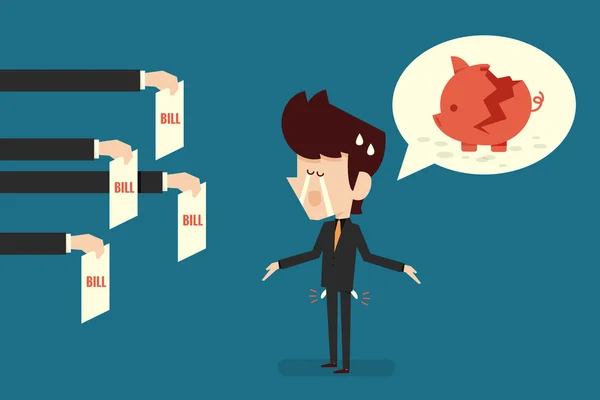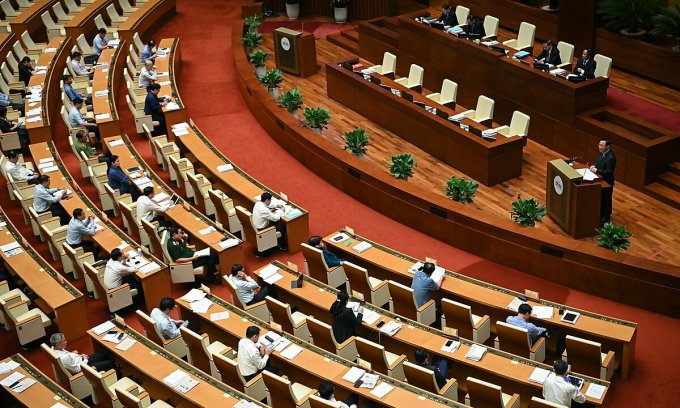Regulations on bankruptcy of joint-stock companies in Vietnam

Many companies’ businesses do not operate efficiently in the market. Even when borrowing from banks and external creditors to maintain business and repay employees, the companies’ operation status can not go well. So, they considered coming into bankruptcy. In this article, LSX legal firm would like to provide you with information regarding: “Regulations on bankruptcy of joint-stock companies in Vietnam”
Legal grounds
- Law on Enterprise 2020
- Law on Bankruptcy 2014
Bankruptcy under Vietnamese legislation
From a legal perspective: orders, procedures, steps, and stages of the settlement of the request for bankruptcy declaration for the debtor.
According to Clause 2, Article 4 of the Law on Bankruptcy 2014: Bankruptcy means the state of an enterprise or cooperative that can not pay its debts and declared bankrupt by the People’s Court.
Thus, an enterprise or cooperative only considered bankrupt when it can not pay its debts and issued a bankruptcy decision by the Court.
Conditions to come into bankruptcy
Under the current Law on Bankruptcy, “Bankruptcy” means a legal status of an insolvent entity that declared bankrupt by the People’s Court.
Thus, the conditions for declaring a joint stock company bankrupt include:
- Firstly, that joint stock company has become insolvent.
- Second, that joint-stock company declared bankrupt by the People’s Court.
Debt repayment obligations of a joint stock company upon bankruptcy
Article 53 of the 2014 Bankruptcy Law provides:
Article 53. Handling secured debts
- After the initiation of bankruptcy process, the asset management officers and/or asset management enterprises shall request the judge to handle the secured debts suspended as prescribed in Clause 3 Article 41. The judge shall consider and decide as follows :
a) If the assets put up as collateral are used for resuming the business operation, they shall be handled according to the Resolution of creditors’ meeting;
b) If the plan to resume business operation is not implemented or the assets put up as collateral are not necessary to resume the business operation, the assets shall be handled according to effective period of the contract, with regard to any secured contract which is due. With regard to any secured contract that is undue, the People’s Court shall suspend the contracts and handle the secured debts before the declaration of bankruptcy. The secured debts shall be handled according to Clause 3 this Article. - If the assets put up as collateral are likely to be damaged or dramatically devalued, the asset management officers and/or asset management enterprises shall request the judge to immediately handled them according to Clause 3 this Article.
- The assets put up as collateral prescribed in Point b Clause 1 and Clause 2 this Article handled as follows:
a) The secured debts determined before the People’s Court receives the written request for initiation of bankruptcy process shall be paid by the collateral.
b) If the value of the collateral is not enough to cover the debt, the remaining value of the debt shall be paid during the liquidation of the assets of the insolvent entity; if the value of the collateral is higher than the debt, the difference shall be included in the value of the assets of the insolvent entity.
Order of priority for payment when the business goes bankrupt
When the judge gives the Decision on the declaration of bankruptcy, the assets of the insolvent entity shall be redistributed in the following sequence:
- Cost of bankruptcy
- The unpaid salaries, severance pay, social insurance, and medical insurance to employees, and other benefits according to the labor contracts and collective bargaining agreements;
- Debts incurred after the initiation of bankruptcy which used for resuming the business operation.
- Financial obligations to the Government; unsecured debts payable to the creditors on the list of creditors; secured debts not paid because the value of collateral not enough to cover such debts.
The remaining amount of the asset value after every payment mentioned above shall belong to:
- Members of the cooperative ;
- Owners of the sole proprietorship;
- Owners of the single-member limited companies;
- Members of multi-member limited liability companies, shareholders of the joint-stock companies;
- members of the partnerships;
If the value of the assets of the insolvent entity is not enough to make the payment, the entities given the same priority shall be paid in proportion to the debt.
If a joint stock company has gone bankrupt, how long will it take to establish a new joint stock company?
Clause 3, Article 130 of the Law on Bankruptcy:
“If any manager of the entity declared bankrupt intentionally commits the violations against the regulations in Clause 1 Article 18, Clause 5 Article 28, and Clause 1 Article 48 of this Law, the Judge shall consider and give a Decision on the prohibition of the establishment of the enterprise or cooperative and working as manager of any enterprise or cooperative within 03 years from the day on which People’s Court issues the Decision on the declaration of bankruptcy.”
- Comply with the requests of Judges, the asset management officers, the asset management enterprises, and civil execution authorities according to the regulations of Law on bankruptcy (Clause 1 Article 18).
- If the entities prescribed in Clause 3 and Clause 4 Article 5 of the Law on Bankruptcy do not file the request for initiation of bankruptcy process on the situation of insolvency of the enterprise or the cooperative, they shall take the liability before the Law. Pay compensation if having any damage caused by the failure to request initiation of the bankruptcy process after the insolvency of the enterprise or the cooperative (Clause 5 Article 28).
- Insolvent entity dispersing and hiding assets; paying the unsecured debts, except the unsecured debts incurred after the initiation of the bankruptcy process and the employees’ salaries prescribed in Point c Clause 1 Article 49 of this Law; Renouncing the right over debt claim; Making unsecured debt into a secured or partly-secured debt with collateral which are assets of the entity (Clause 1 Article 48).
Accordingly, the owner must not establish another joint-stock company within 03 years from the date the People’s Court issues a decision declaring bankruptcy (if violates the regulations above). In contrast, owners can establish another one whenever they want if not having any violations.
Legal service of LSX Legal Firm
LSX legal firm provides legal services to clients in various legal areas. To make your case convenient, LSX will perform:
- Legal advice related to new regulations;
- Representing in drafting and editing documents;
- We commit the papers to be valid, and legal for use in all cases;
- Represent to submit documents, receive results, and hand them over to customers.
With a team of experienced, reputable, and professional consultants; The firm is always ready to support and work with clients to solve legal difficulties.
Furthermore, using our service, you do not need to do the paperwork yourself; We guarantee to help you prepare documents effectively and legally.
Also, you will not have to waste time preparing the application, submitting application, or receiving results. At those stages, we will help you do it smoothly.
After all, LSX provides the service with the desire that customers can experience it the best way. Additionally, we guarantee the cost to be the most suitable and economical for customers.
Contact LSX
Finally, hope this article is useful for you to answer the question about “Regulations on bankruptcy of joint-stock companies in Vietnam”. If you need any further information, please contact LSX Law firm: +84846175333 or Email: [email protected]
Related articles
- How to buy voluntary health insurance in Vietnam while pregnant?
- Online personal health insurance renewal procedure in Vietnam
- Do I have to pay the Insurance for work-related accident or occupational disease for domestic workers in Vietnam?
Related questions
Firstly, a notice of business suspension;
Secondly, the decision of the Board of Directors on business suspension;
Thirdly, a copy of the meeting minutes of the Board of Directors on business suspension;
Fourthly, power of attorney for individuals to carry out the procedures (if enterprises cannot do it themselves);
Lastly, copy of the company’s business registration certificate (if any).
Dividend preference shares;
Redeemable preferred shares;
Voting preference shares;
Other preferred shares as prescribed in the company’s charter and the law on securities.
Firstly, company’s name
Secondly, address of head office
Thirdly, company’s business lines
Lastly, charter capital
Conclusion: So the above is Regulations on bankruptcy of joint-stock companies in Vietnam. Hopefully with this article can help you in life, please always follow and read our good articles on the website: lsxlawfirm.com




